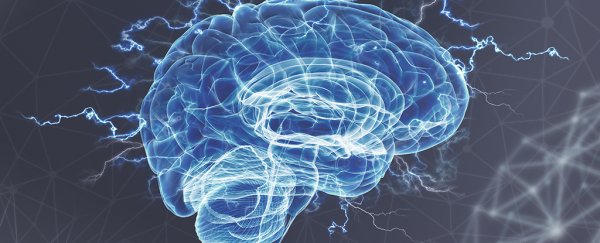Stimulation of specific brain cells could one day be prescribed to individuals who have autism - to help reduce the difficulty they experience with social interactions.
Research carried out on the brains of mice has not only confirmed a potential area of brain tissue that could be critical for many of the characteristic behaviours in autism, but even hints at a method that could one day correct the impairments it causes in humans.
Scientists from the O'Donnell Brain Institute in Texas have demonstrated in transgenic mice that an area in the cerebellum long associated with autism spectrum disorder (ASD) can be manipulated to both produce autism-like characteristics and reverse them.
While it's important to keep in mind the differences between animal models and humans, the researchers used the same mapping processes on people who didn't have ASD to show we share the same neurology.
Autism and associated disorders are characterised by traits that include difficulties in communicating and socialising, as well as experiencing sensitivities to various stimuli and exhibiting repeated movements such as hand flapping or pacing.
The variety of characteristics and degrees of severity make it hard to pinpoint exact causes of the condition, though enormous headway has been made in recent years in identifying the diverse connections in the brain that could be responsible for many of these traits.
One area which is thought to be responsible is the small walnut-shaped blob at the back of the brain known as the cerebellum, generally known for its role in coordinating precise, practised movements, such as walking or playing an instrument.
In post-mortems of people with ASD, an abnormality in the right hemisphere of a zone called crus cerebellum I (RCrusI) has been consistently linked with those diagnosed with the disorder.
This might make some sense when it comes to repetitive movements, but the researchers had shown in a 2012 study based on mice models that the abnormalities could also impede social interactions.
Following up on the research, scientists in this latest study stimulated the neurons in RCrusI to effectively switch autism-like behaviours on and off, confirming the tissue's connection with the disorder.
"This is potentially quite a powerful finding," says senior researcher Peter Tsai from UT Southwestern Medical Center's Peter O'Donnell Jr. Brain Institute.
"From a therapeutic standpoint, this part of the cerebellum is an enticing target."
Neuromodulation describes technologies that directly alter the firing of nerves, which can often involve interfering with pain reception in the brain or 'deep brain stimulation' of tissues related to conditions such as Parkinson's disease.
In this case the researchers applied it to the cerebellum and used functional magnetic resonance imaging (fMRI) to map the resulting functional connectivity – the traffic map of brain activity – with the rest of the brain.
Applied to both mice and humans, the study demonstrated we have good reason to think the areas in both reflect each other fairly closely.
The team then used fMRI scans to show the same functional connections are disrupted in children diagnosed with ASD and mice engineered with the rodent equivalent of the disorder.
What's more, when RCrusI functions were disrupted in non-engineered mice, they began to display unusual social behaviours and repetitive actions reminiscent of traits associated with ASD.
Flipping this on its head, the researchers then used specially designed stimulants to artificially increase the rate of firing in the engineered mice's affected cerebellum nerves.
Amazingly, while the repetitive behaviours remained unchanged, the usual signs of social impairments were reduced. Or to use the researcher's jargon, their social behaviours were "rescued".
"Our findings have prompted new thoughts on how the cerebellum may be involved in autism and most importantly suggest that the cerebellum could be a therapeutic target for treatment," says Tsai.
Don't expect some wonder drug to come out any time soon. The stimulants – called designer receptors exclusively activated by designer drugs', or DREADDs – were designed to fit unique chemical locks genetically engineered into the mice's brains.
But using other stimulants to manipulate the firing of the cerebellum's cells could one day be an option for treatment.
It's not a promise of a cure-all. ASD is far more complicated than we ever considered, arising from a mix of faulty genes and environmental factors to affect various neurological circuits that give rise to a whole bunch of characteristics associated with communicating and sensing.
But the social impairments arising from ASD can be among the most stressful, so any research that helps us better understand these aspects and even find a way to treat them is to be celebrated.
This research was published in Nature Neuroscience.
